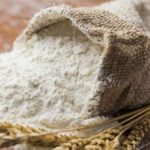Baking with a Twist
Apple cider vinegar is a secret ingredient that can take your baked goods to the next level. Adding it to your recipes will not only make your treats fluffier and crispier, but it will also enhance their flavor with a delightful tang.
It can even be used as an egg substitute in certain baking recipes. If you’re a baking enthusiast, why not experiment with apple cider vinegar? You might just fall in love with the unique twist it adds to your favorite treats.

Caramel Candy with a Kick
For a memorable treat that appeals to both kids and adults alike, add a splash of apple cider vinegar to your caramel recipe. It will give the candy a subtle, spicy kick that will leave everyone asking for your secret ingredient!
Amping Up Your BBQ Game
Take your barbecue to the next level by marinating your meat in a mouthwatering mixture of apple cider vinegar, wine, garlic, and chili. This combination will infuse your meat with irresistible flavors.
Let the meat soak up all the delicious flavors for a few hours before grilling it to perfection over hot coals. Serve it with a refreshing beer or a chilled soda for the ultimate culinary experience.

Perfectly Boiled Eggs
For an easy way to improve your boiled eggs, simply add a dash of apple cider vinegar to the pot while they’re cooking. This trick will not only speed up the cooking process but also prevent the eggshells from cracking.

Cleaner Fruits and Vegetables
If you’re hesitant to use chemical produce washes, try a natural alternative: apple cider vinegar. Simply mix one part vinegar with nine parts water, and soak your fruits and vegetables in the solution for a few minutes. Rinse them with water afterward, and they’ll be ready to eat or cook with!
Are you surprised by the versatility of apple cider vinegar in the kitchen? If you’re a fan, be sure to try out these tips to enhance the flavor and cleanliness of your dishes. And if you have any other clever uses for apple cider vinegar, be sure to share them with us!
baking-food-with-a-microwave-ovens-grill-setting/’ title=’Tips for Baking Food with a Microwave Oven’s Grill Setting’>Tips for Baking Food with a Microwave Oven’s Grill Setting
Identifying the Differences between Bleached and Unbleached Flour
This article will take a closer look at the distinguishing features between bleached and unbleached flour. We will examine the advantages and disadvantages of both, so that you can better understand how each type of flour affects baking recipes. Read on to discover more about the unique properties of bleached and unbleached flour!





































